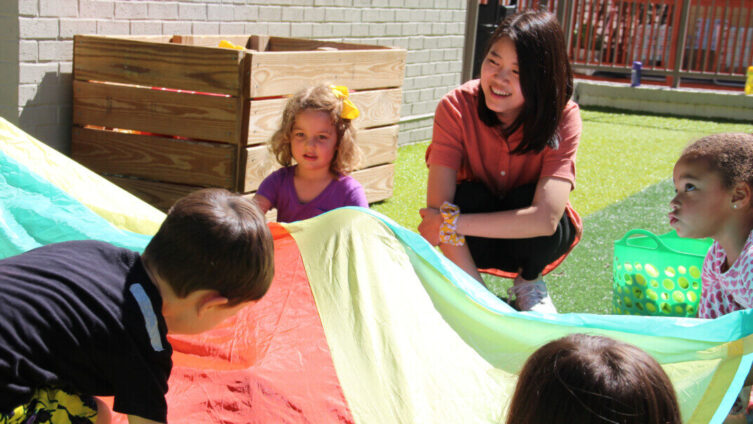
By Samantha Chong
TCS Occupational Therapist
From childhood to adulthood, we continuously learn to identify our own emotions and build emotional self-regulation skills to help us attend and meet demands in everyday life.
For example, some of us may chew gum or eat a crunchy snack to stay focused during a meeting. Other times we may exercise or meditate to help us cope with negative emotions. We actively use regulation tools e.g., shaking knees, playing with hair, clicking pens everyday without even being aware of them. These are all emotional regulation tools we develop over time as we better understand our body needs and emotions and ways we can support ourselves.
When adults ask how they can help children build self-regulation skills, I like to start with the concept of co-regulation. Children are not born with self-regulation skills, instead they develop self-regulation skills through co-regulation with trusted adults in their lives. In other words, co-regulation is a process that starts in infancy when warm, responsive and consistent interactions with adults help shape and build self-regulation skills.
Co-regulation happens prior to a child being able to self-regulate, and is an incredibly powerful tool as it utilizes one’s nervous system to help calm and soothe another nervous system. We may not notice it, but we offer and rely on our partners and loved ones to co-regulate all the time.
For example when you’re feeling stressed or emotional, how would it feel if your partner walked away from you or told you to “just calm down?” You might feel abandoned, isolated and invalidated. On the other hand, when your partner practices co-regulation, they can offer emotional validation and help soothe your emotions by being fully present with your feelings. The same process happens with adults and children.
So, what exactly does co-regulation look like? Here are a few strategies you can practice co-regulation with your child.
- Validate all feelings: This means consistently attuning to your child’s feelings and being responsive to their needs. For example, when a child is having a meltdown, it can be quick for adults to want to fix the situation and bring them to an immediate calm by giving them a consequence or telling them what to feel instead. When children (and really all of us) are in fight-or-flight mode, they are unable to access their problem-solving “upstairs” brain. During these times of crisis, they need to feel safe and supported. Offering validation and emotional support is a key step in the process of co-regulation. This can be as simple as stating: “I notice you are feeling upset.” You can be more descriptive by stating: “I see your face flustered and your hands are fisted. I think you may be angry.” You do not have to agree with the behavior to validate their feelings.
- Physical and mental presence: Co-regulation happens in close proximity. You cannot co-regulate when you’re upstairs and the child is downstairs, or from the next room. It also cannot happen when you’re in a distressed state as it will only escalate the situation. Take a few deep breaths to ground yourself. If you’re unable to maintain calmness, take a few minutes and then try again, or ask another present adult for help. It requires one to be present and calm in order to regulate another person’s nervous system.
- Use fewer words: Try using a warm and gentle voice. You may even whisper to help bring the energy down. Co-regulation isn’t about problem solving or giving explanations. In fact, using fewer words or supportive silence are often more effective in bringing down the arousal level of a dysregulated child.
- Model self-regulation techniques: This can be lowering your body so you are at your child’s eye level, holding hands and taking deep breaths together, offering a tight hug or squeezing a comfort item. You can also adjust the environment including dimming the lights, playing soothing music and reducing visual clutter. For really young kids, use blowing bubbles together as a way to take deep breaths. When a child is regulated, we can then teach them to redirect and cope with their feelings in a healthier manner.
- Establish routines: Co-regulation does not only occur during a meltdown or tantrum. It is an active process through how we show up for our kids. One of the best gifts we can offer children is a predictable and safe environment. This can look like regular mealtimes, consistent sleep/wake schedule, and uninterrupted child-led play time where there is no expectation of learning or teaching a skill, even if it’s just 5 minutes a day.
I hope these strategies are a helpful start to understanding and practicing co-regulation. A good reminder about co-regulation is that it is less about doing, but more about how we can be present and show up for our children.
Here are more resources to help you learn about building co-regulation and emotional regulation skills and the neuroscience behind it:
- The Baffling Behavior Podcast by Robyn Gobbel
- Jessica Sinarski books and resources that uses brain science to discuss big emotions in children-friendly language









